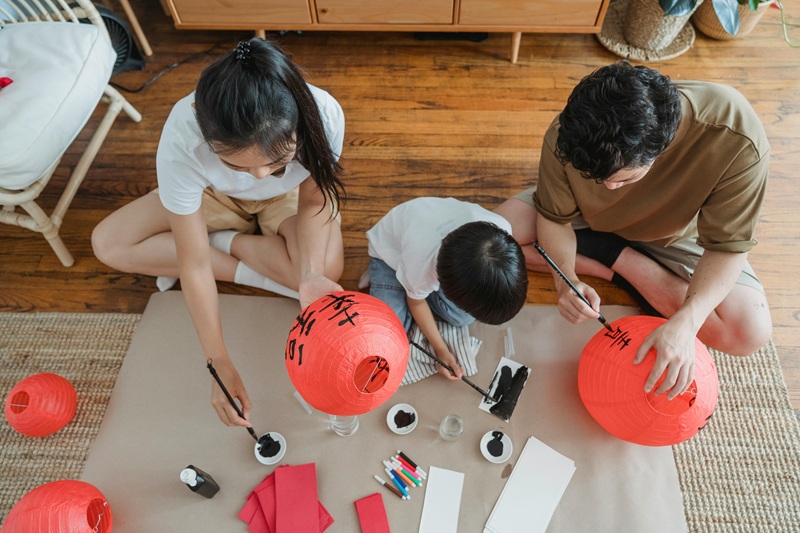
For many children, culture is not just background—it is woven into the way they communicate, relate, and play. In play therapy, acknowledging and integrating a child’s cultural identity can be deeply healing, especially for children navigating the complexities of bicultural or immigrant experiences. Take, for instance, a 7-year-old Chinese Singaporean girl living in Nigeria who uses dolls in the playroom to act out the Lunar New Year reunion dinner. As she arranges a miniature family at the table and serves symbolic dishes, she reenacts scenes that hold personal and intergenerational meaning. The therapist, by noticing and reflecting on these rituals—“It looks like this dinner is really important to your family”—not only affirms her cultural pride but creates space for emotional exploration tied to belonging, expectations, or family transitions.
Traditional games also offer powerful therapeutic entry points for culturally responsive care. In a school-based play therapy setting, the same child might initiate a round of five stones or teach the therapist how to play chapteh, games she learned from her grandparents. These activities build rapport while reinforcing self-esteem, especially when the child is positioned as the “expert.” Through play, she reclaims a sense of agency and shares aspects of her heritage that may not always be visible or valued in majority-dominant settings. This cultural mirroring helps the therapist understand the child’s social world while sending a clear message: all parts of who you are are welcome here.
Language and communication style also play a key role in expressing cultural identity. A bilingual child might switch between Mandarin and English during pretend play, especially when mimicking parents or teachers. Instead of correcting the language, a culturally attuned therapist might mirror the child’s phrases or ask, “Would you like to tell me what that means?”—thus reinforcing safety and respect. In another session, a child might pick figurines inspired by Asian mythology—a dragon or a jade rabbit—and use them to tell a story. Through this kind of symbolic play, the child could be exploring big emotions like bravery, fear, or feeling alone. The therapist’s role is not to decode these symbols too quickly but to follow the child’s narrative and respond with curiosity and reverence.
Culturally diverse materials in the playroom—dolls in traditional clothing, miniature ancestral altars, Chinese calligraphy brushes, or familiar foods like mooncakes—help children feel seen and celebrated. When a child notices a doll wearing a cheongsam and smiles, or uses red paper to make a lantern, she is not just engaging in play—she is affirming her identity in a space that can hold both joy and pain. Perhaps that lantern becomes a symbol of longing for a grandparent back home in China or becomes a “wishing lamp” for a dream she hasn’t spoken out loud. In honoring these layered expressions, therapists offer more than play—they offer cultural witness and emotional healing that reaches across generations.
Play therapy offers children a safe space to express emotions, build resilience, and heal through the power of play. Therapists use toys and creative activities to connect with children on their level, helping them process experiences they may not have words for. If you’re a parent, educator, or professional looking to learn more, Nurture Pods offers free online courses designed to equip you with practical tools and insights. Start learning today at https://nurturepods.com/free-training-courses
Written by: Alex Liau
Published on 7 October 2025





